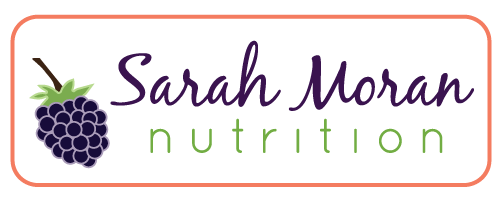Three "Healthy" Foods This Dietitian Never Buys
/- Egg substitute. If there's one thing to remember when it comes to food, it's that an imitation is never going to beat out the real thing. The cholesterol in eggs actually doesn't have much of an impact on blood cholesterol and whole eggs are chock full of nutrients. Egg substitutes, on the other hand, get rid of the yolk, which is nutrient rich, and then throw in additives and cheap vitamins in an effort to make up the difference. Instead, go for the real thing (my Feta Red Onion Frittata is a great place to start) and find a local supplier who raises their chickens on pasture.[gap size="50px"]
- Boneless, skinless chicken breasts. Believe it or not, chickens aren't boneless, nor are they skinless. :) Instead, buy whole pastured chickens from a local supplier and roast them, or cut them up into parts yourself. You'll be able to afford high quality meat (because whole chickens are cheaper than parts) and you'll get the benefit of the different nutrient profiles found in the various parts. Plus, when a chicken is raised properly on pasture, the fat composition is different, meaning you can eat the skin without any worries. As a bonus, you'll have the bones leftover too, which can be used to make a healthy and delicious homemade chicken stock.[gap size="50px"]
- Skim milk. Again, we've got to get off this anti fat train. Many nutrients can't even be absorbed by the body unless there is some fat in the mix. If you can tolerate dairy well, find milk that comes from cows raised on pasture (noticing a trend here?) and buy the whole stuff. For those of you who want some more info and explanation on why I love whole milk, I made a video all about it.
Did any of these items surprise you? Share your thoughts in the comments below!












 Putting something on a skewer instantly makes it seem fancier. Plus, it can trick you into eating less because the food takes up so much more room on the plate. If you don't have skewers or it isn't warm enough to grill, you can also cook the shrimp in a pan on the stove-top (that's what I did). Shrimp are a great lean protein option and they take on other flavors quickly so no marinating is required. A simple toss will do.
Putting something on a skewer instantly makes it seem fancier. Plus, it can trick you into eating less because the food takes up so much more room on the plate. If you don't have skewers or it isn't warm enough to grill, you can also cook the shrimp in a pan on the stove-top (that's what I did). Shrimp are a great lean protein option and they take on other flavors quickly so no marinating is required. A simple toss will do. When making the change to whole grains, a simple switch you can make is to use whole grain pasta. Nowadays, not only can you buy whole wheat varieties, but other grains are being used too, such as spelt, kamut, and even brown rice. Some people might be worried about the taste or texture of whole grain pastas compared to those made with refined flour. However, it has been my experience that most people don't see a difference when they switch over and, if anything, find that the whole grain pastas have a heartier texture. Another plus is that dried pasta is a cheap and quick meal that can be made on a busy weeknight and can be totally transformed depending on what toppings you use. It can also be added to soups or used in a casserole (lasagna anyone?). If you're still unsure, try mixing refined and whole grain pastas 50/50 in a dish and see how you like it. This can help you transition to eating only whole grain pastas by gradually increasing the amount of whole grain and decreasing the amount of refined pasta.
When making the change to whole grains, a simple switch you can make is to use whole grain pasta. Nowadays, not only can you buy whole wheat varieties, but other grains are being used too, such as spelt, kamut, and even brown rice. Some people might be worried about the taste or texture of whole grain pastas compared to those made with refined flour. However, it has been my experience that most people don't see a difference when they switch over and, if anything, find that the whole grain pastas have a heartier texture. Another plus is that dried pasta is a cheap and quick meal that can be made on a busy weeknight and can be totally transformed depending on what toppings you use. It can also be added to soups or used in a casserole (lasagna anyone?). If you're still unsure, try mixing refined and whole grain pastas 50/50 in a dish and see how you like it. This can help you transition to eating only whole grain pastas by gradually increasing the amount of whole grain and decreasing the amount of refined pasta. Believe it or not, popcorn is a whole grain. However, it gets a lot of flack because it’s usually covered with too much salt and butter. It’s a situation we see quite often, where the food itself is not unhealthy, but the preparation method or toppings take it to a bad place. As with any food, the best way to eat popcorn is to start as close to the raw ingredient as possible so you know what’s going into it. I prepare my popcorn using an air popper. If you don’t have one, they are quite affordable. Mine cost me about $20 and if you eat popcorn often, you will save money in the long run because you will only be paying for the unpopped kernels rather than all of the processing and packaging that goes into microwave varieties. Plus you only need a small amount of kernels (about 2 tablespoons) for a hefty serving. Then, you can add your own toppings like your favorite herbs and spices or grated parmesan. Here’s to healthy snacking!
Believe it or not, popcorn is a whole grain. However, it gets a lot of flack because it’s usually covered with too much salt and butter. It’s a situation we see quite often, where the food itself is not unhealthy, but the preparation method or toppings take it to a bad place. As with any food, the best way to eat popcorn is to start as close to the raw ingredient as possible so you know what’s going into it. I prepare my popcorn using an air popper. If you don’t have one, they are quite affordable. Mine cost me about $20 and if you eat popcorn often, you will save money in the long run because you will only be paying for the unpopped kernels rather than all of the processing and packaging that goes into microwave varieties. Plus you only need a small amount of kernels (about 2 tablespoons) for a hefty serving. Then, you can add your own toppings like your favorite herbs and spices or grated parmesan. Here’s to healthy snacking! We hear lots of talk about variety when it comes to our fruits and veggies. When you're eating a variety of foods you're likely to have a more balanced diet that provides all of the vitamins and minerals you need. I think we should extend this philosophy to the grains we eat as well. Most of us eat only a few grains including wheat, corn, and oats. However, there are so many different grains out there, such as kamut, farro, quinoa, and teff, and they are becoming more readily available all the time. These are often referred to as ancient grains because they have been around for thousands of years and have not been subjected to the industrial breeding that the more predominant grains have. This means that they have varied flavor, texture, and nutrient profiles, which can also help to make your meals more interesting. If you'd like a little background on the origin and flavor properties of some of these grains, be sure to check out
We hear lots of talk about variety when it comes to our fruits and veggies. When you're eating a variety of foods you're likely to have a more balanced diet that provides all of the vitamins and minerals you need. I think we should extend this philosophy to the grains we eat as well. Most of us eat only a few grains including wheat, corn, and oats. However, there are so many different grains out there, such as kamut, farro, quinoa, and teff, and they are becoming more readily available all the time. These are often referred to as ancient grains because they have been around for thousands of years and have not been subjected to the industrial breeding that the more predominant grains have. This means that they have varied flavor, texture, and nutrient profiles, which can also help to make your meals more interesting. If you'd like a little background on the origin and flavor properties of some of these grains, be sure to check out